Effect of methylene blue on the genomic response to reperfusion injury induced by cardiac arrest and cardiopulmonary resuscitation in porcine brain
- PMID: 20594294
- PMCID: PMC2904268
- DOI: 10.1186/1755-8794-3-27
Effect of methylene blue on the genomic response to reperfusion injury induced by cardiac arrest and cardiopulmonary resuscitation in porcine brain
Abstract
Background: Cerebral ischemia/reperfusion injury is a common secondary effect of cardiac arrest which is largely responsible for postresuscitative mortality. Therefore development of therapies which restore and protect the brain function after cardiac arrest is essential. Methylene blue (MB) has been experimentally proven neuroprotective in a porcine model of global ischemia-reperfusion in experimental cardiac arrest. However, no comprehensive analyses have been conducted at gene expression level.
Methods: Pigs underwent either untreated cardiac arrest (CA) or CA with subsequent cardiopulmonary resuscitation (CPR) accompanied with an infusion of saline or an infusion of saline with MB. Genome-wide transcriptional profiling using the Affymetrix porcine microarray was performed to 1) gain understanding of delayed neuronal death initiation in porcine brain during ischemia and after 30, 60 and 180 min following reperfusion, and 2) identify the mechanisms behind the neuroprotective effect of MB after ischemic injury (at 30, 60 and 180 min).
Results: Our results show that restoration of spontaneous circulation (ROSC) induces major transcriptional changes related to stress response, inflammation, apoptosis and even cytoprotection. In contrast, the untreated ischemic and anoxic insult affected only few genes mainly involved in intra-/extracellular ionic balance. Furthermore, our data show that the neuroprotective role of MB is diverse and fulfilled by regulation of the expression of soluble guanylate cyclase and biological processes accountable for inhibition of apoptosis, modulation of stress response, neurogenesis and neuroprotection.
Conclusions: Our results support that MB could be a valuable intervention and should be investigated as a therapeutic agent against neural damage associated with I/R injury induced by cardiac arrest.
Figures

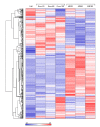

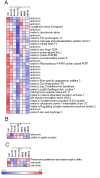

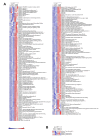
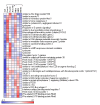

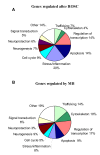
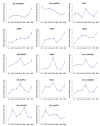
Similar articles
-
Cerebral Tissue Oxidative Ischemia-Reperfusion Injury in Connection with Experimental Cardiac Arrest and Cardiopulmonary Resuscitation: Effect of Mild Hypothermia and Methylene Blue.Mol Neurobiol. 2018 Jan;55(1):115-121. doi: 10.1007/s12035-017-0723-z. Mol Neurobiol. 2018. PMID: 28895060 Free PMC article.
-
Improved neuroprotective effect of methylene blue with hypothermia after porcine cardiac arrest.Acta Anaesthesiol Scand. 2013 Sep;57(8):1073-82. doi: 10.1111/aas.12106. Epub 2013 Apr 12. Acta Anaesthesiol Scand. 2013. PMID: 23577658
-
Methylene blue protects the cortical blood-brain barrier against ischemia/reperfusion-induced disruptions.Crit Care Med. 2010 Nov;38(11):2199-206. doi: 10.1097/CCM.0b013e3181f26b0c. Crit Care Med. 2010. PMID: 20711066
-
Upregulation of hemeoxygenase enzymes HO-1 and HO-2 following ischemia-reperfusion injury in connection with experimental cardiac arrest and cardiopulmonary resuscitation: Neuroprotective effects of methylene blue.Prog Brain Res. 2021;265:317-375. doi: 10.1016/bs.pbr.2021.06.009. Epub 2021 Aug 12. Prog Brain Res. 2021. PMID: 34560924 Review.
-
Central nervous tissue damage after hypoxia and reperfusion in conjunction with cardiac arrest and cardiopulmonary resuscitation: mechanisms of action and possibilities for mitigation.Int Rev Neurobiol. 2012;102:173-87. doi: 10.1016/B978-0-12-386986-9.00007-7. Int Rev Neurobiol. 2012. PMID: 22748830 Review.
Cited by
-
From Mitochondrial Function to Neuroprotection-an Emerging Role for Methylene Blue.Mol Neurobiol. 2018 Jun;55(6):5137-5153. doi: 10.1007/s12035-017-0712-2. Epub 2017 Aug 24. Mol Neurobiol. 2018. PMID: 28840449 Free PMC article. Review.
-
Neurometabolic mechanisms for memory enhancement and neuroprotection of methylene blue.Prog Neurobiol. 2012 Jan;96(1):32-45. doi: 10.1016/j.pneurobio.2011.10.007. Epub 2011 Nov 3. Prog Neurobiol. 2012. PMID: 22067440 Free PMC article. Review.
-
Methylene blue counteracts H2S toxicity-induced cardiac depression by restoring L-type Ca channel activity.Am J Physiol Regul Integr Comp Physiol. 2016 Jun 1;310(11):R1030-44. doi: 10.1152/ajpregu.00527.2015. Epub 2016 Mar 9. Am J Physiol Regul Integr Comp Physiol. 2016. PMID: 26962024 Free PMC article.
-
New Molecular Aspects of Cardiac Arrest; Promoting Cardiopulmonary Resuscitation Approaches.Emerg (Tehran). 2018;6(1):e40. Epub 2018 Jul 2. Emerg (Tehran). 2018. PMID: 30584556 Free PMC article.
-
Cardiac Arrest Alters Regional Ubiquitin Levels in Association with the Blood-Brain Barrier Breakdown and Neuronal Damages in the Porcine Brain.Mol Neurobiol. 2015 Oct;52(2):1043-53. doi: 10.1007/s12035-015-9254-7. Epub 2015 Jun 25. Mol Neurobiol. 2015. Retraction in: Mol Neurobiol. 2025 Jan;62(1):1317. doi: 10.1007/s12035-024-04603-9. PMID: 26108181 Retracted.
References
-
- 2005 American Heart Association Guidelines for Cardiopulmonary Resuscitation and Emergency Cardiovascular Care Part 7.5: postresuscitation support. Circulation. 2005;112(24 Suppl):IV84–IV88. - PubMed
-
- Nolan JP, Neumar RW, Adrie C, Aibiki M, Berg RA, Bottiger BW, Callaway C, Clark RS, Geocadin RG, Jauch EC. Post-cardiac arrest syndrome: Epidemiology pathophysiology, treatment and prognostication A Scientific Statement from the International Liaison Committee on Resuscitation; the American Heart Association Emergency Cardiovascular Care Committee; the Council on Cardiovascular Surgery and Anesthesia; the Council on Cardiopulmonary Perioperative, and Critical Care; the Council on Clinical Cardiology; the Council on Stroke. Resuscitation. 2008;79(3):350–379. doi: 10.1016/j.resuscitation.2008.09.017. - DOI - PubMed
Publication types
MeSH terms
Substances
LinkOut - more resources
Full Text Sources
Medical
Molecular Biology Databases
Miscellaneous

